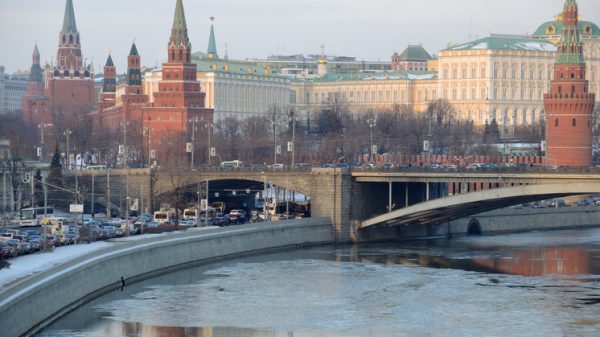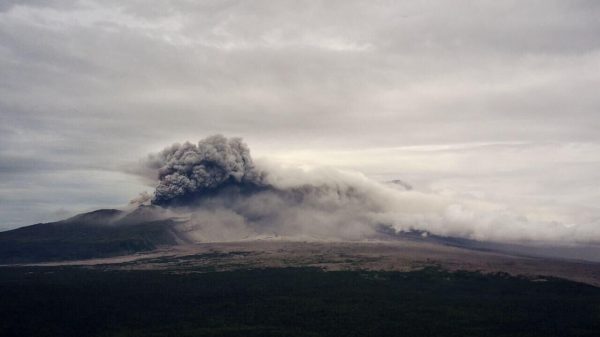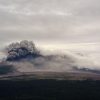
Refrigerated meat, seafood and other frozen products have all been tossed at Xinfadi market
Credit: Getty Images AsiaPac /A Chinese epidemic control worker wears a protective suit as she performs a nucleic acid swab test for COVID-19 on a man at a government testing site in Xicheng District
China has suspended sales and storage of cold-chain and aquatic products at a Beijing market – Asia’s largest – linked to a summer outbreak, as authorities continue pushing a narrative that the coronavirus was imported from abroad.
Refrigerated meat, seafood and other frozen products have all been tossed at Xinfadi market, located in a southern district of Beijing. Cold storage facilities at the market have also been disinfected and shut down, according to Chinese state media.
For months, Chinese officials have blamed cluster outbreaks on coronavirus they say have been found on frozen food products imported from countries including the US, EU, New Zealand, Canada, India, Germany and Ecuador.
Many of the countries, however, have said they’re unsure about China’s methodology in detecting the virus. But that hasn’t stopped Chinese authorities from rushing to test food products and the workers that handle them, as well as banning imports and disrupting global trade.
The US has questioned whether the crackdown is indeed based in science, especially as many of the nations impacted are embroiled in diplomatic spats with Beijing. China often uses economic leverage to punish nations as bilateral tensions rise.

Police officers wearing face masks stand guard outside an entrance to the Xinfadi wholesale market in Beijing
Credit: REUTERS
The World Health Organization has also said that cases of live viruses being found on packaging appeared to be “rare and isolated". Other health experts have cautioned against drawing causal links between food packaging and outbreaks – finding traces of virus indicates it is present on a surface, but does not mean it can cause infections.
“I’ve seen no convincing data that SARS-Cov-2 on food packaging poses a significant risk of infection,” said Andrew Pekosz of Johns Hopkins University’s Bloomberg School of Public Health.
Although the science behind the virus on packaging remains unclear, that has not stopped Beijing from unleashing a sophisticated propaganda campaign to continue pushing its narrative. They argue the coronavirus did not start in Wuhan, but rather originated in the West and exploded when it reached China.
Advancing the line that the virus originated abroad – stoking nationalist pride and anti-foreign sentiment – has allowed Chinese authorities to deflect public anger over its coverup of the pandemic.
“All available evidence suggests that the coronavirus, which has infected more than 59 million people in 190 countries, did not start in central China’s Wuhan,” Chinese state media has proclaimed.
Wu Zunyou, chief epidemiologist of China’s centre for disease control and prevention, also said recently the pathogen could have entered China through imported frozen seafood or meat products and their packaging.

Advancing the line that the virus originated abroad has allowed Chinese authorities to deflect public anger
Credit: Shutterstock
The World Health Organization said this week it had received assurances that international experts would be able to visit China to investigate the origins of the coronavirus after a two-person WHO team left China following a three-week mission without being allowed to head to Wuhan.
The WHO delegation then remained in Beijing, sparking concern from western governments over whether Beijing would cooperate in international investigations into pandemic origins.
WHO experts are interested in re-interviewing early Covid-19 cases and to find infected workers who could provide clues on where they may have picked up the coronavirus.
“There is nothing to indicate that it would be man-made,” said Peter Ben Embarek, a WHO expert in animal diseases on Wednesday.
“Before 2019, we don’t really know what happened – we don’t know how the virus jumped from its most probable natural environment in the bat population over to humans. And it’s that bit of history that we need to re construct.”
























































Свежие комментарии